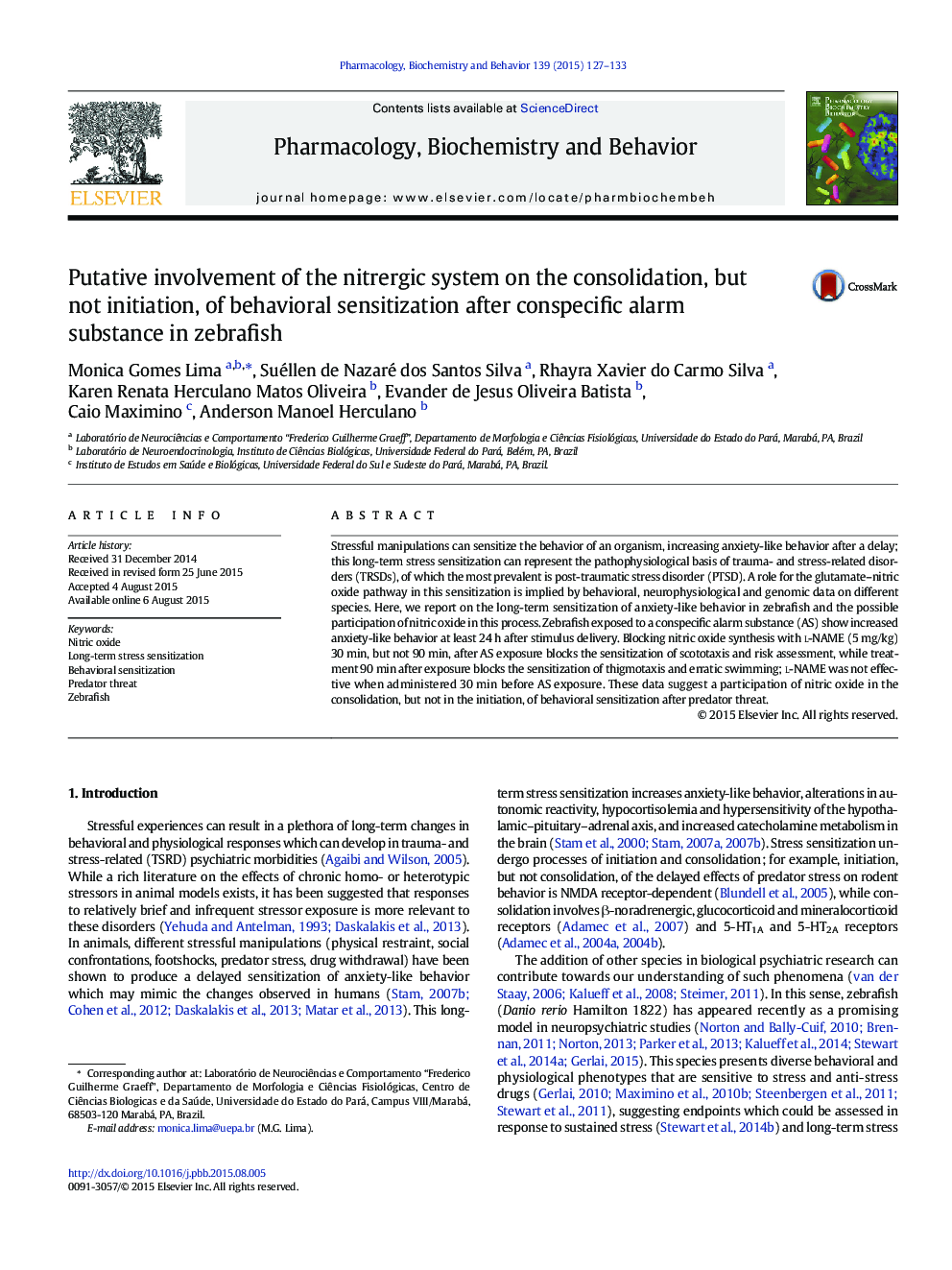| Article ID | Journal | Published Year | Pages | File Type |
|---|---|---|---|---|
| 2012739 | Pharmacology Biochemistry and Behavior | 2015 | 7 Pages |
Abstract
Stressful manipulations can sensitize the behavior of an organism, increasing anxiety-like behavior after a delay; this long-term stress sensitization can represent the pathophysiological basis of trauma- and stress-related disorders (TRSDs), of which the most prevalent is post-traumatic stress disorder (PTSD). A role for the glutamate-nitric oxide pathway in this sensitization is implied by behavioral, neurophysiological and genomic data on different species. Here, we report on the long-term sensitization of anxiety-like behavior in zebrafish and the possible participation of nitric oxide in this process. Zebrafish exposed to a conspecific alarm substance (AS) show increased anxiety-like behavior at least 24Â h after stimulus delivery. Blocking nitric oxide synthesis with l-NAME (5Â mg/kg) 30Â min, but not 90Â min, after AS exposure blocks the sensitization of scototaxis and risk assessment, while treatment 90Â min after exposure blocks the sensitization of thigmotaxis and erratic swimming; l-NAME was not effective when administered 30Â min before AS exposure. These data suggest a participation of nitric oxide in the consolidation, but not in the initiation, of behavioral sensitization after predator threat.
Related Topics
Life Sciences
Biochemistry, Genetics and Molecular Biology
Biochemistry
Authors
Monica Gomes Lima, Suéllen de Nazaré dos Santos Silva, Rhayra Xavier do Carmo Silva, Karen Renata Herculano Matos Oliveira, Evander de Jesus Oliveira Batista, Caio Maximino, Anderson Manoel Herculano,
